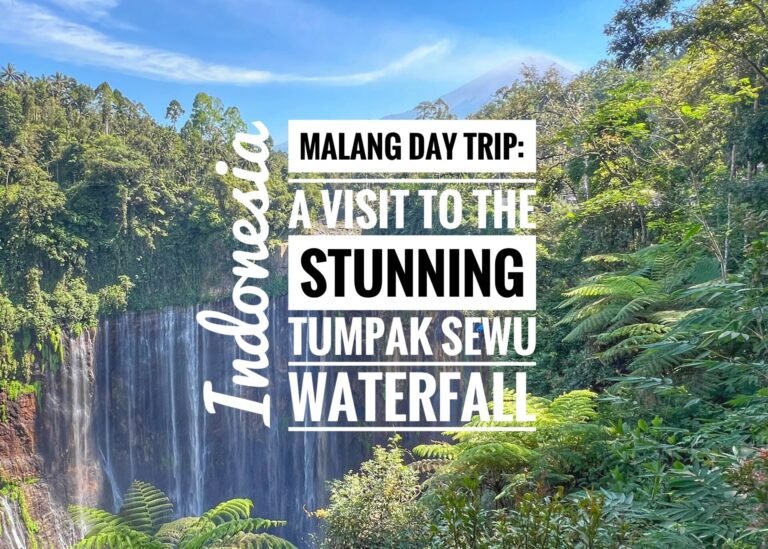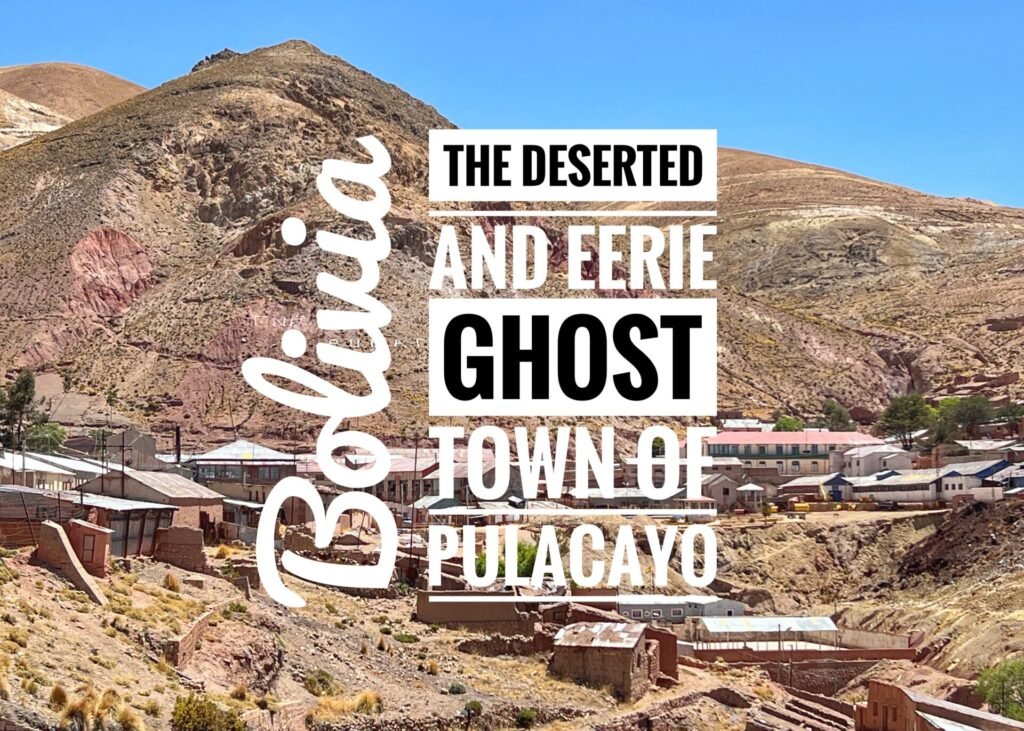
We knew would be enamored by the Salar de Uyuni, but what we didn’t realize is we would also love our day trip to the nearly deserted, almost ghost town, silver and tin mining village of Pulacayo. In fact, this abandoned time capsule with brushes of “fame” from Butch Cassidy, put us in our true exploratory element and ended up being one of our most fun days while in Bolivia!
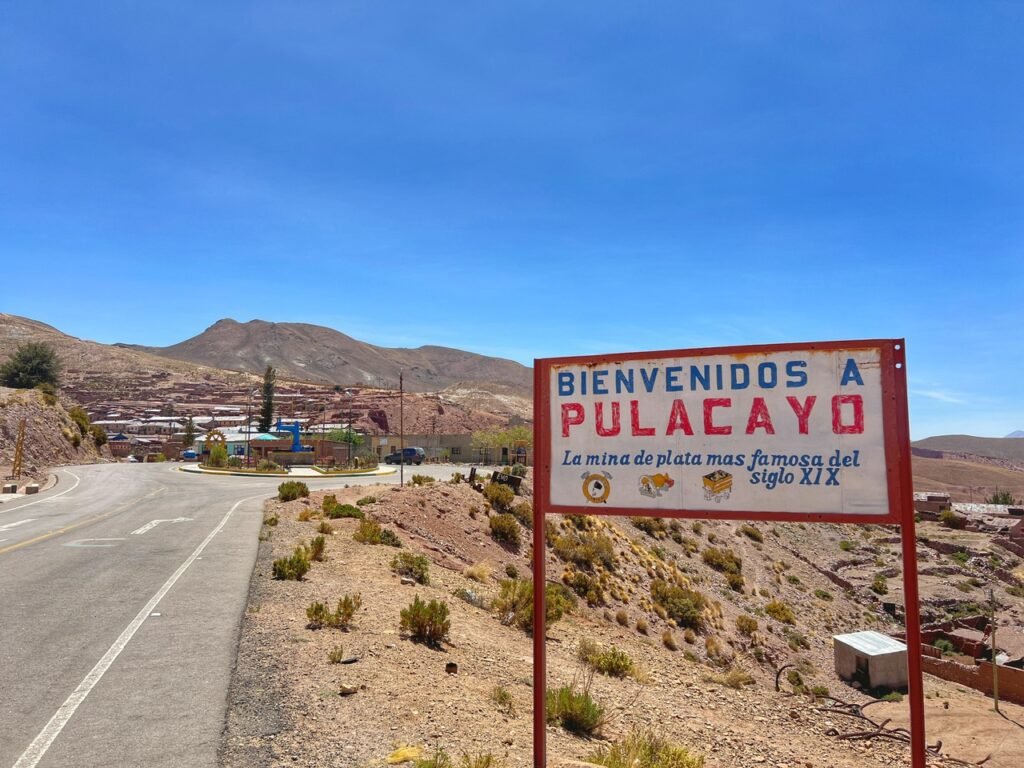
The welcome sign says it’s the most famous silver mine from the 19th Century. Although at the end of the 19th and the first half of the 20th centuries Pulacayo had a population of nearly 60,000 inhabitants, today only about 400 people live there. We were lucky enough to befriend one of these men at the bus stop who was a retired miner and had lived there his whole life.
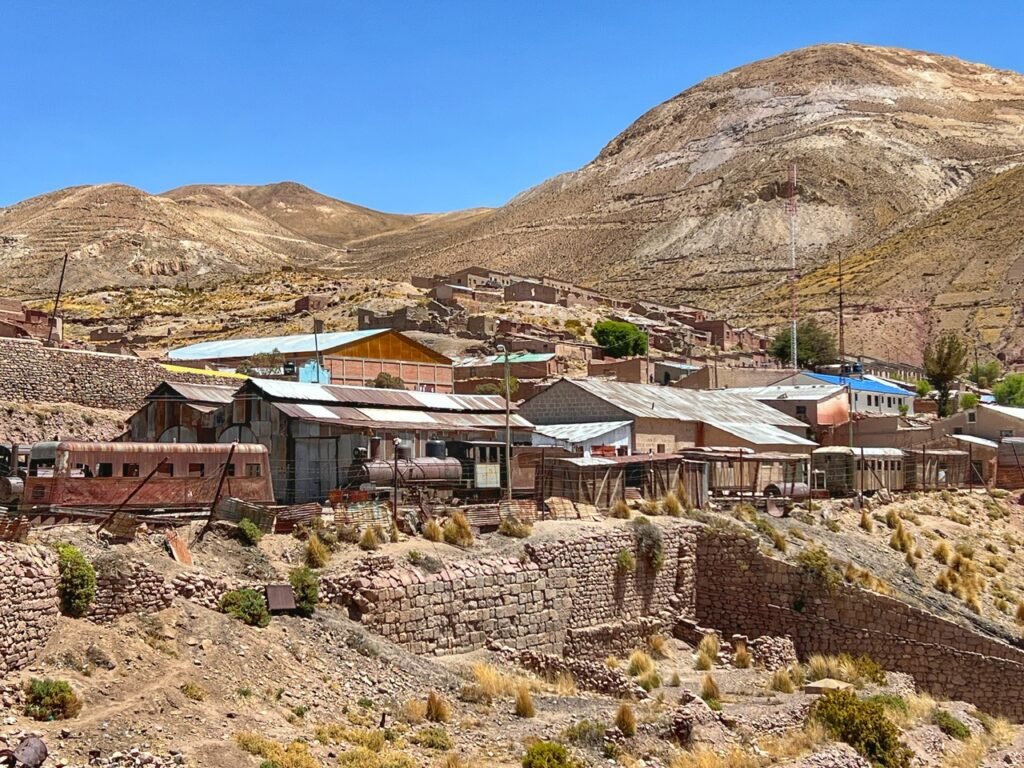
A sweeping view of the village looks like a US western movie when you first arrive. It’s by far one of the coolest ghost towns we’ve ever seen.

What remains of homes from centuries’ past.
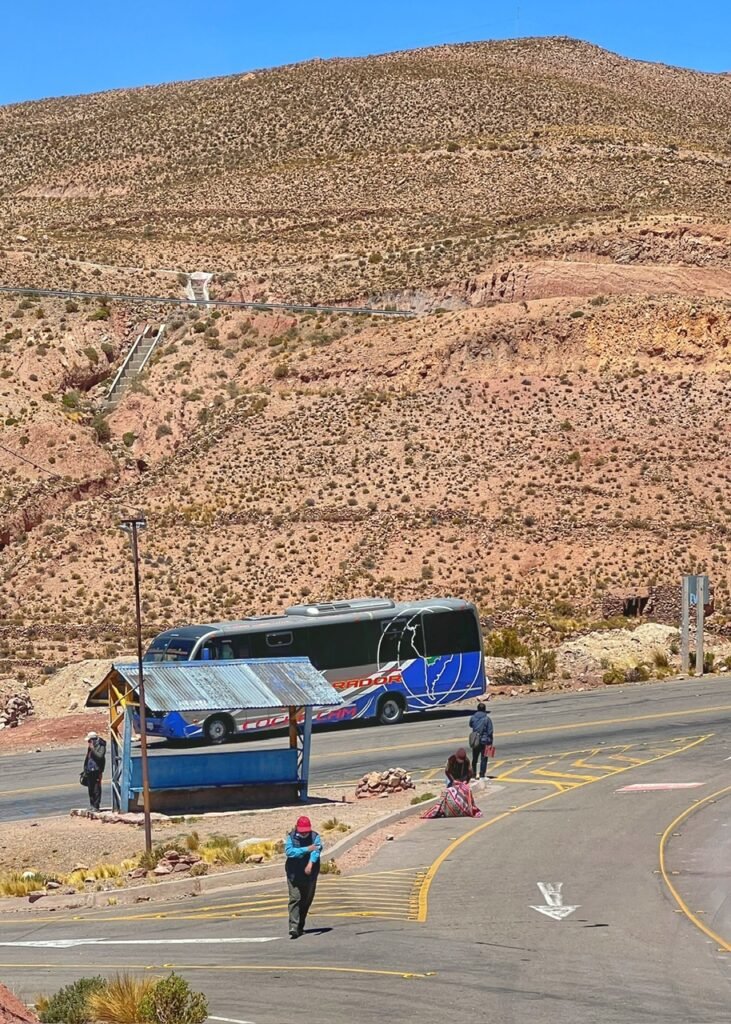
Pulacayo is about 30 minutes by local bus from Uyuni and cost us both about $3.50 round trip, making it a very affordable day trip. You can get on any bus going toward Potosi and just tell the driver you need to get off at Pulacayo. There is a small stop on the main road and you walk uphill about 5 minutes to arrive in the village.
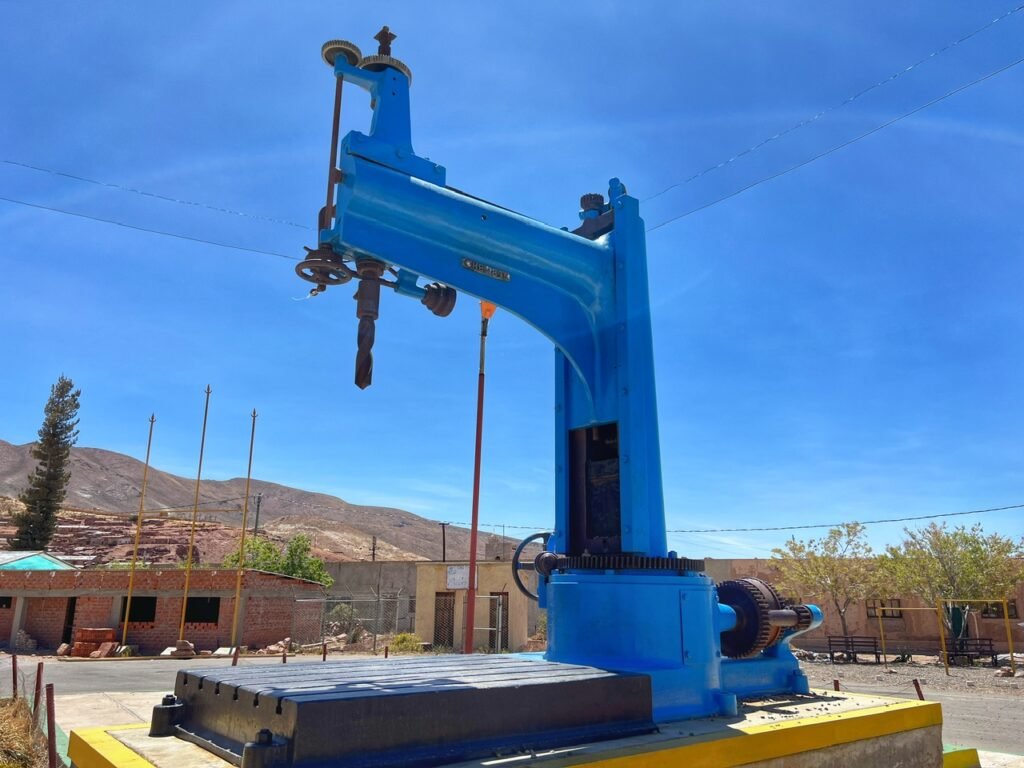
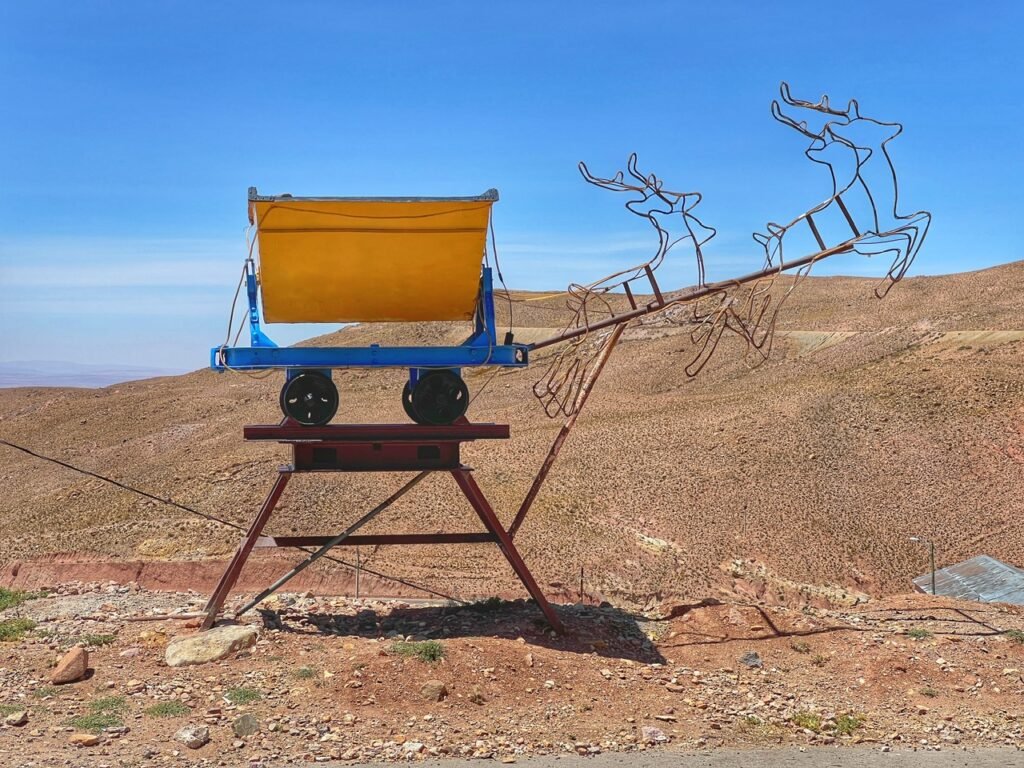
While most towns place a predictable dude on a horse statue in their roundabouts, the first thing you will see in Pulacayo’s roundabout is funnily what looks like a giant drill press, next to some reindeer pulling a mining cart rendition of Santa’s sleigh.

This is a section of the village used for modern housing. We know because of the giant satellite dishes that bedecked some of them.
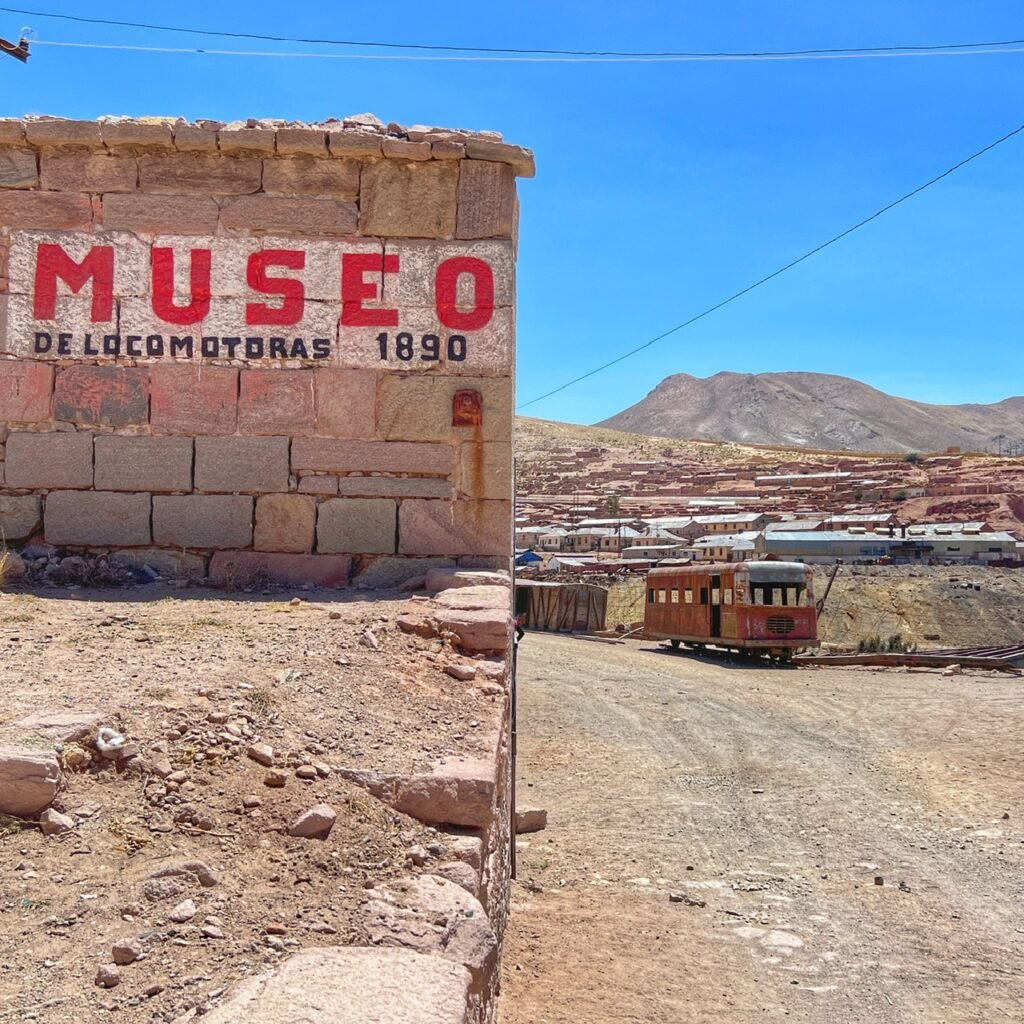
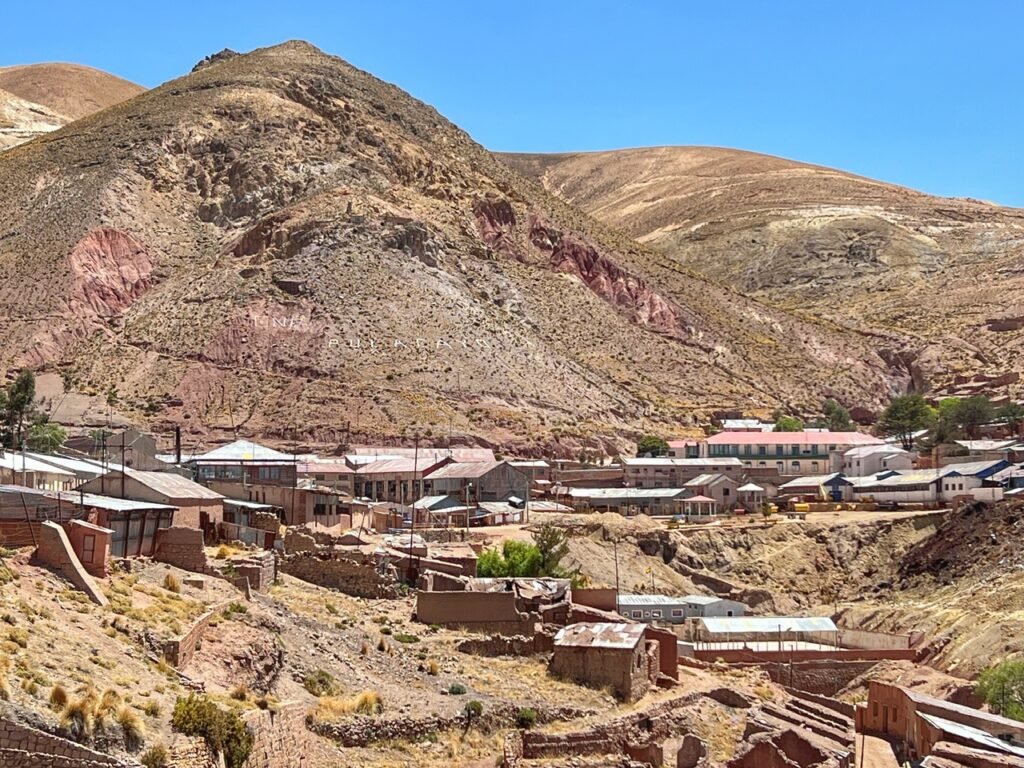
When you first enter the town, you walk through the open-air (free) museum which is blanketed with train relics from 1890 on. And what’s amazing about THIS train cemetery? Not a single soul was here unlike the tourist zoo in Uyuni. We loved how the village name accessorized the mountain in tiny pebble print.

The “modern” day church.

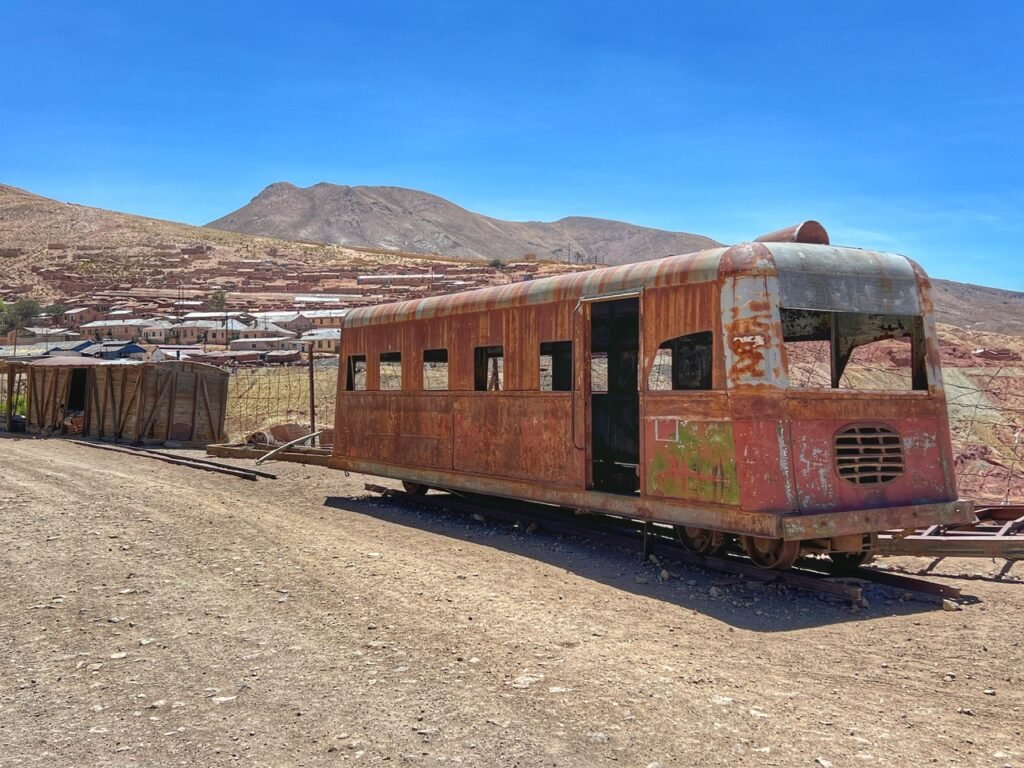
The Pulacayo train cemetery is where lies the very first locomotives that entered Bolivia in 1890. It includes a locomotive that Butch Cassidy and Sundance Kid attacked, attracted by the riches it carried!
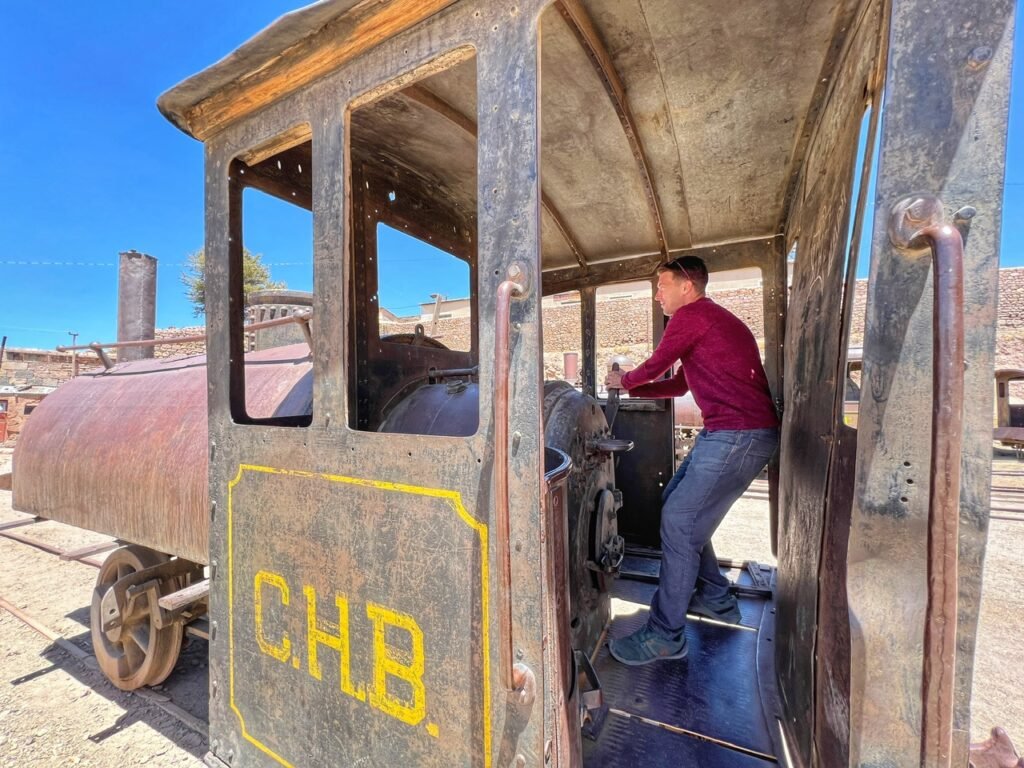
Like the cemetery in Uyuni, there is nothing to stop you from climbing around inside the locomotives, as Señor Chase, the newly named train conductor, demonstrates.

The locomotives were imported from the US and UK and worked with coal, but because there is no coal in Bolivia they were modified to work with oil.
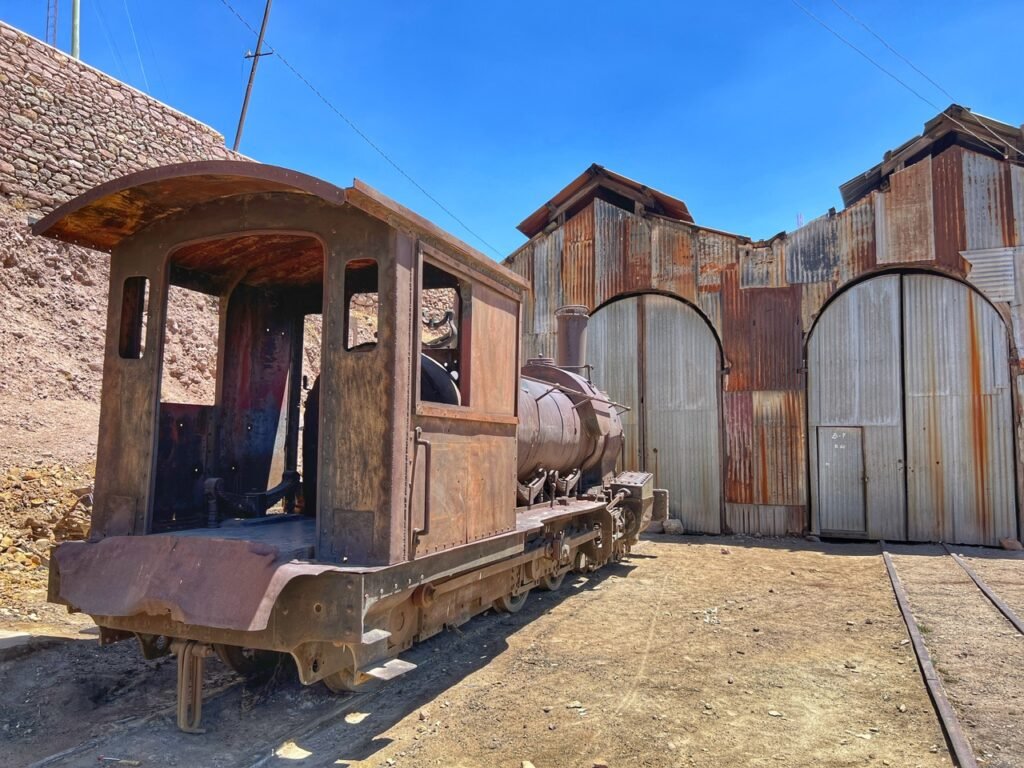

And inside this barn, we were able to peek and see the very first 1890 locomotive! Wow! Slap some red and yellow paint on and it would look like a toy!


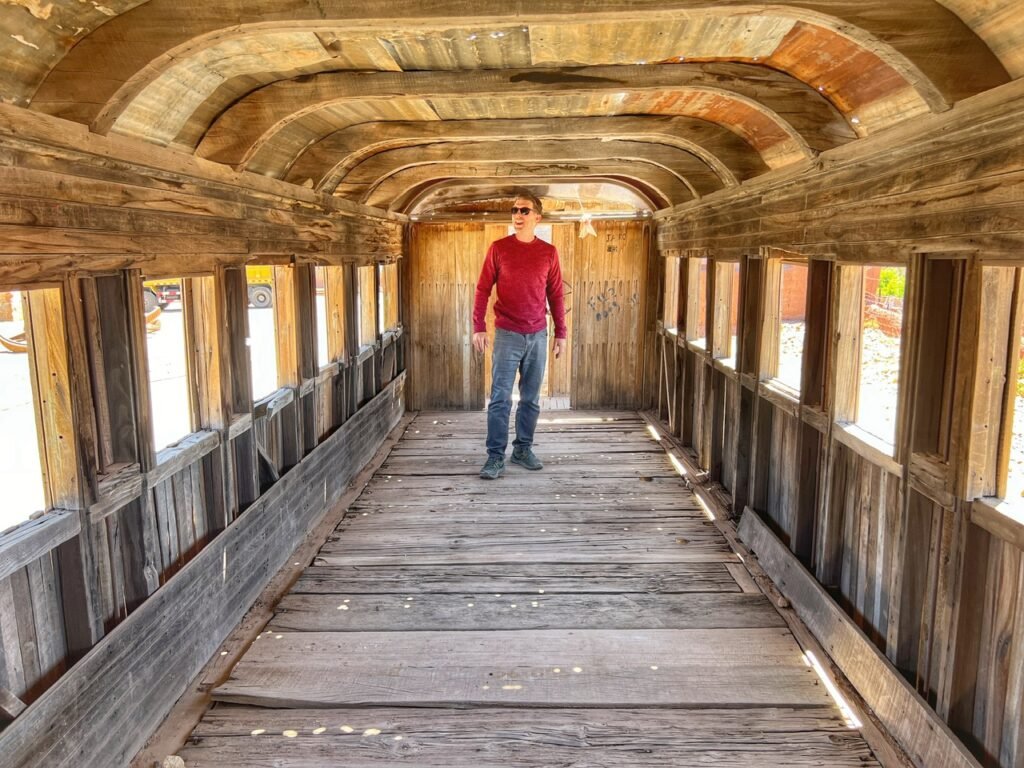
Speaking of playtime, one of the passenger cars. Can you imagine traveling in this?! The entire thing was made of wood.
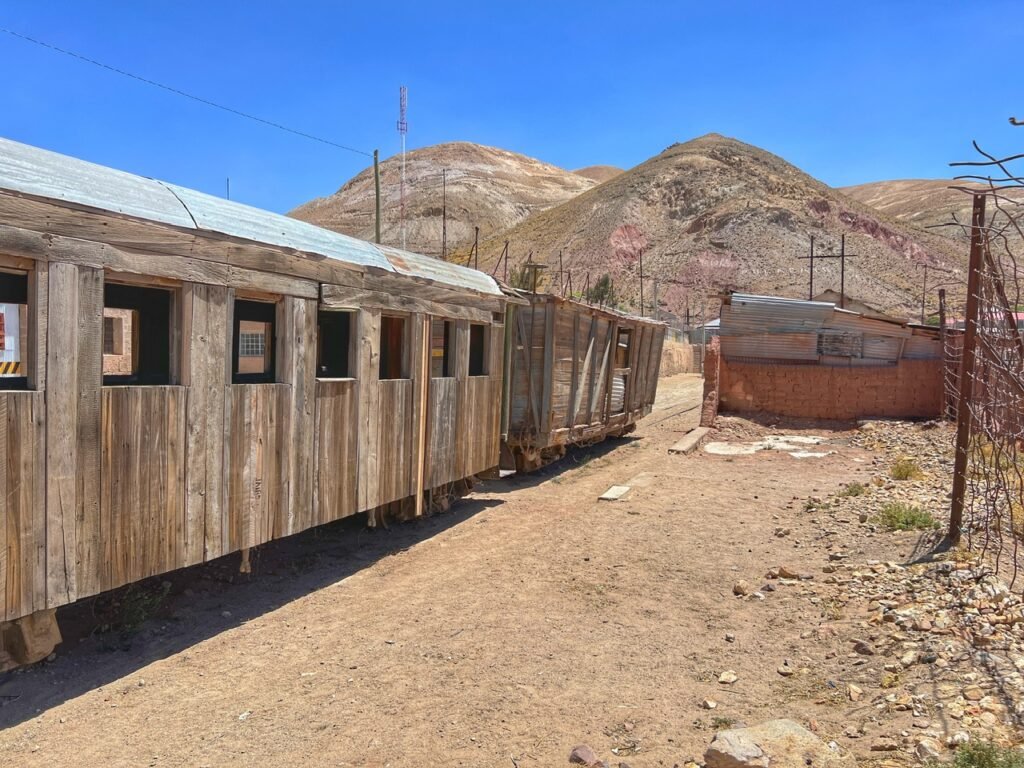
Hard to believe they’re still standing.
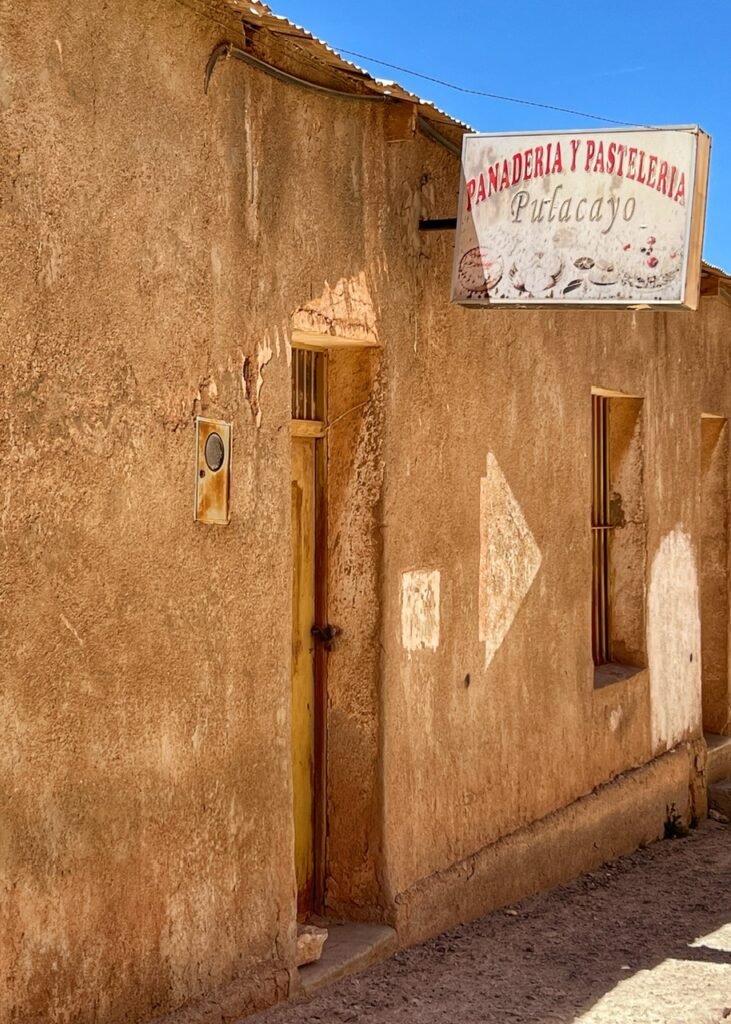

Moving on from the museo, we saw an indication of a sweet shop that once existed. There was definitely no signs of restaurants or retail open anymore. However, we did hear a small cacophony of children coming from the local school.
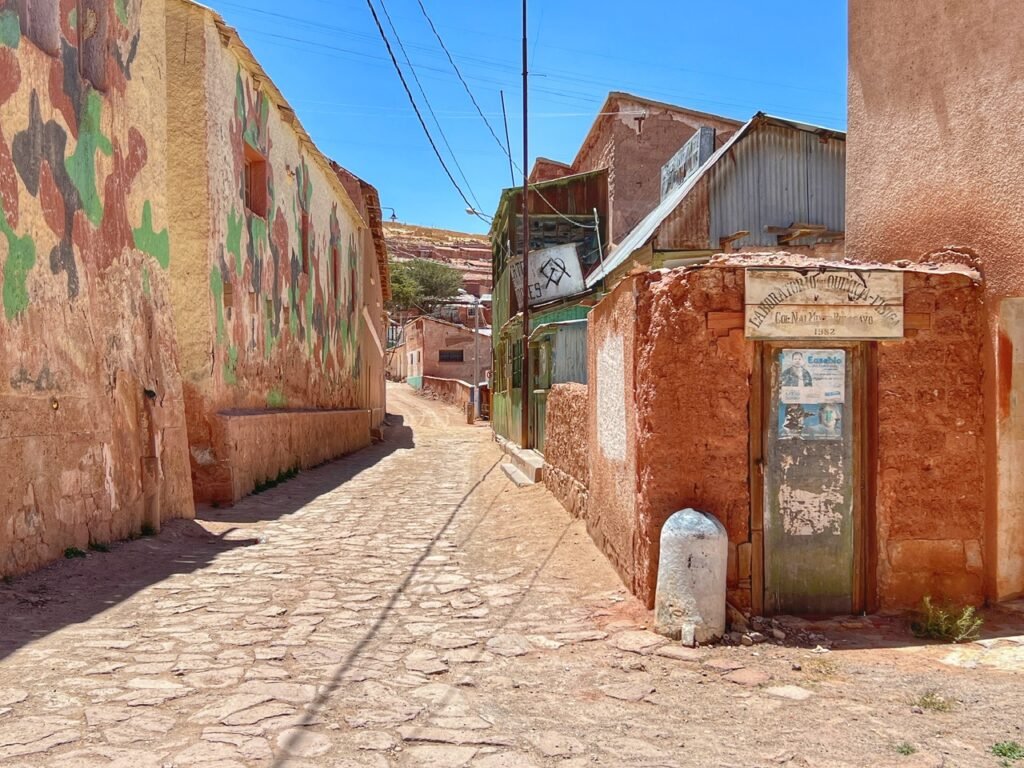
The deserted streets of Pulacayo. On the right one can see a laboratory. Uh…remind us not to get our blood drawn there anytime soon 😬
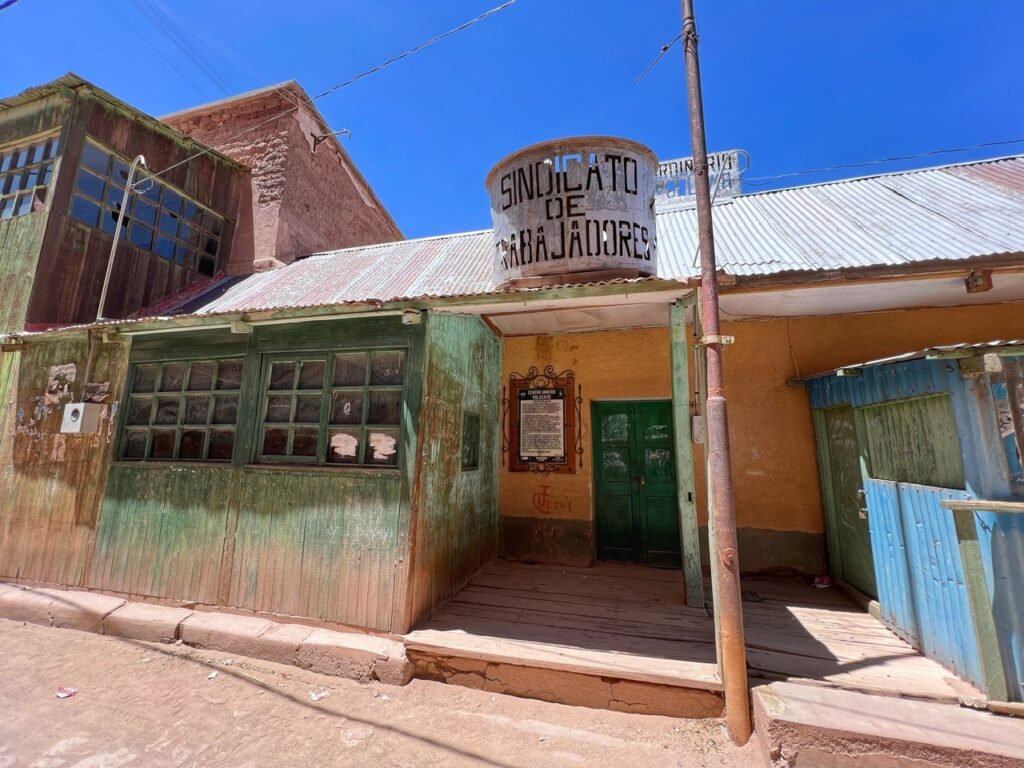
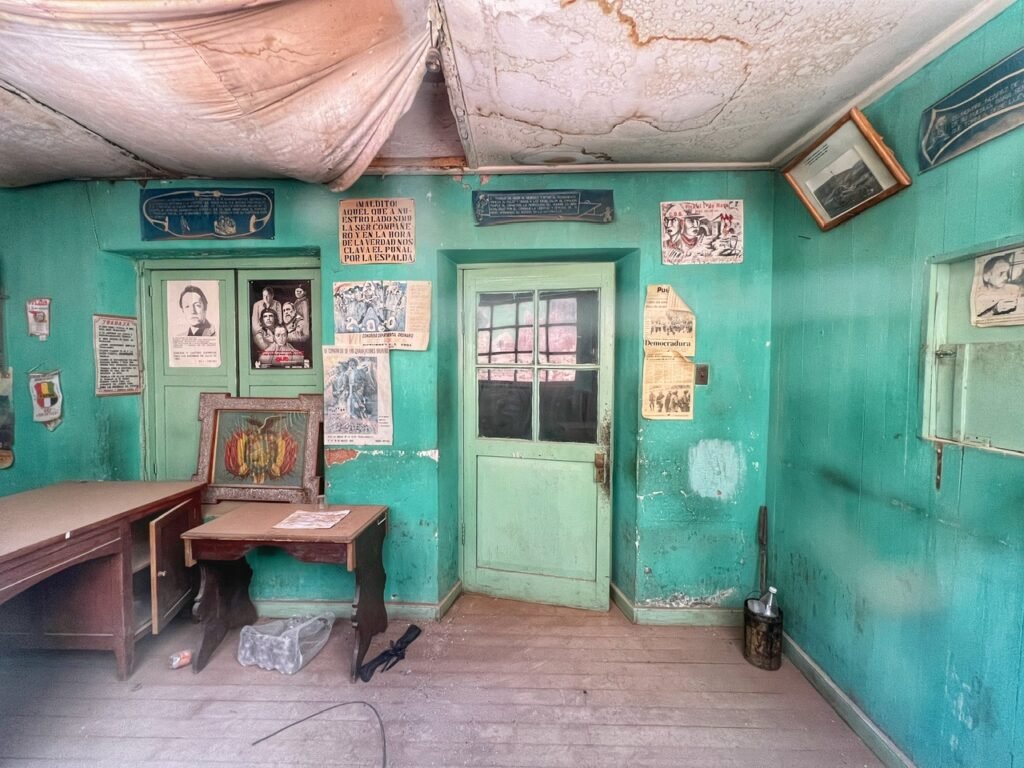
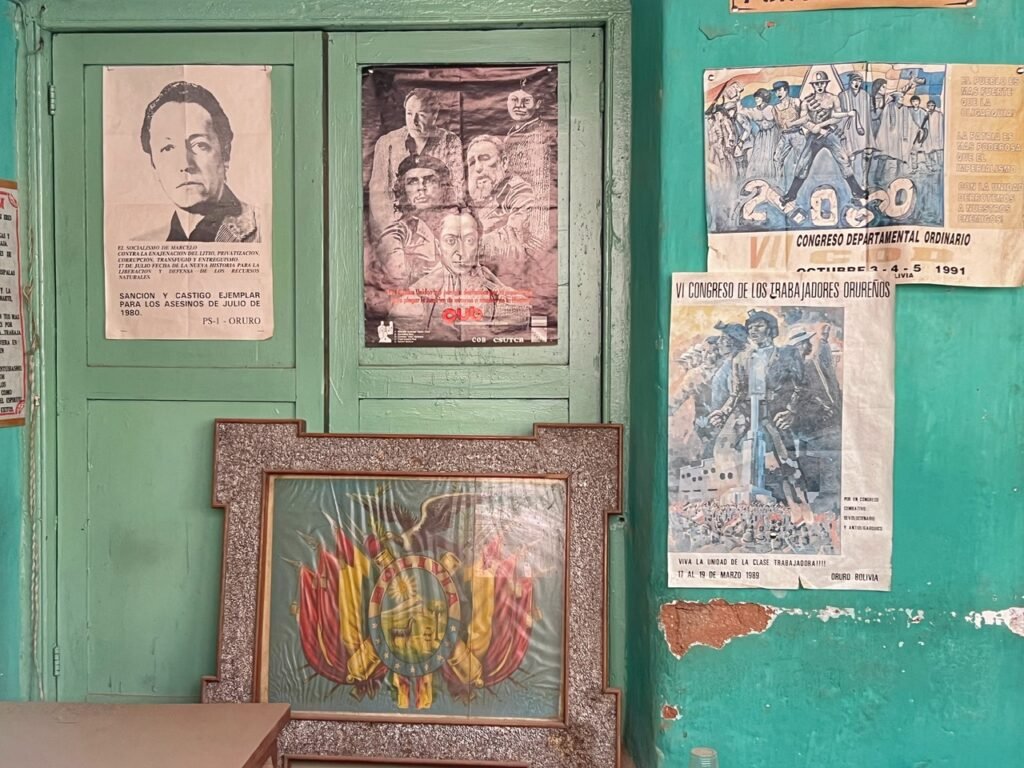
This place is the Syndicate of Miners. It was here the famous “Thesis of Pulacayo” was signed in 1952, between miners, trade union movements and revolutionaries. We curiously peered through the windows to see the historic news articles and propaganda on the walls.

A historic cinema, boarded and closed
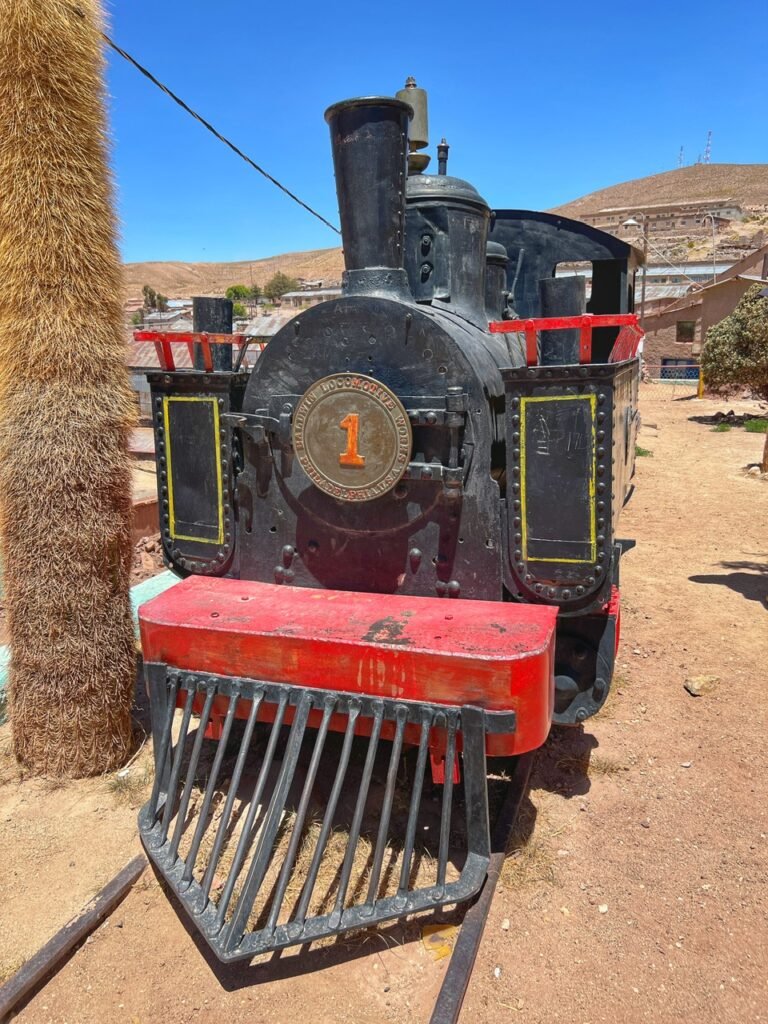
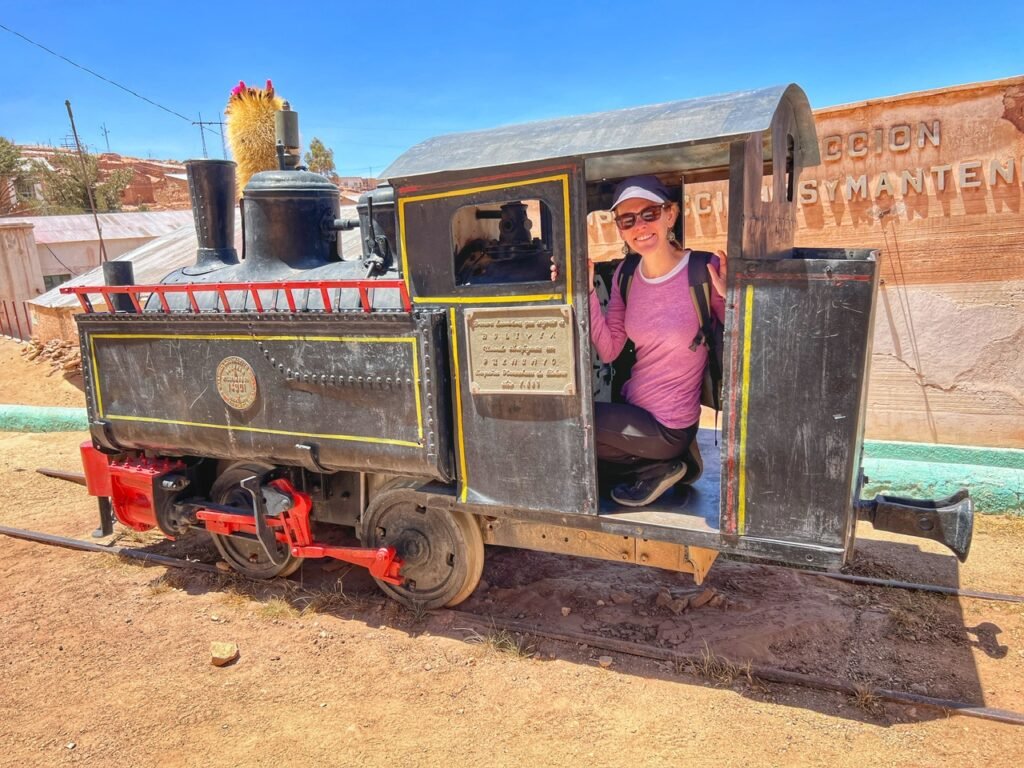
A Baldwin Locomotive, 1890, Philadelphia. Based on the size, we think this train was a replica, but there wasn’t really any indication that this was true 🤣
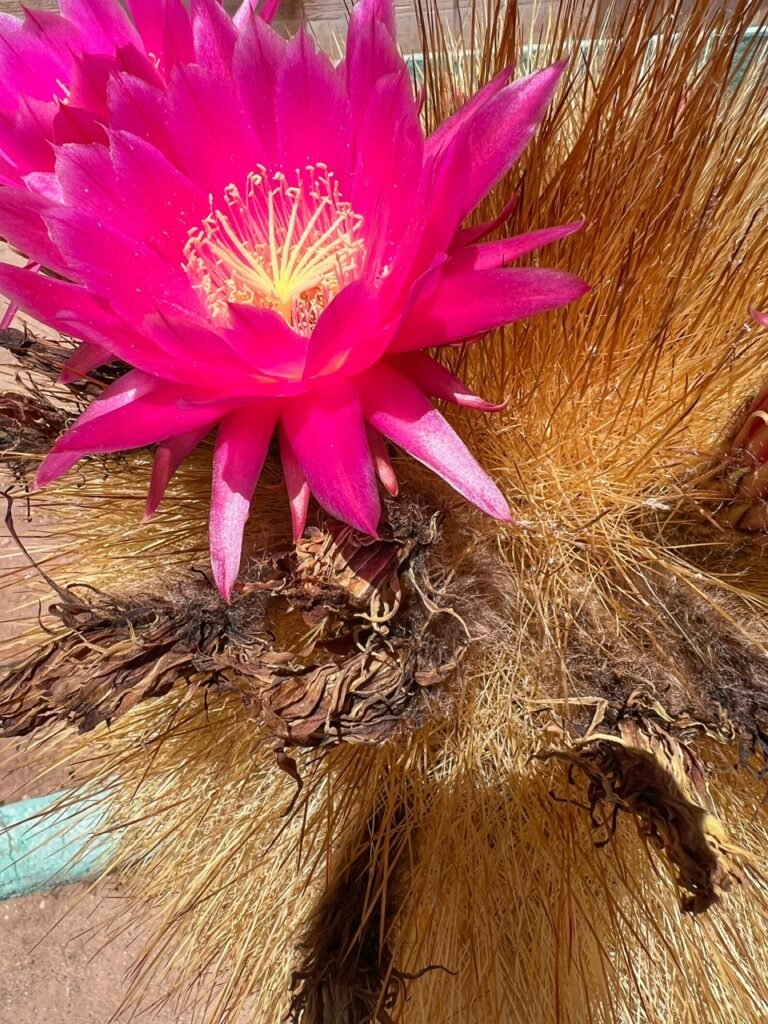
An eye-catching bloom on a cactus

This building, or Management House, dates back to 1878. It was built with stone, lime and stone and decorated following the European style of the time with French details. The former president Aniceto Arce lived there. Inside there are carved valuables and embossed furniture in wood and leather that were imported from different parts of the world, including pianos, marble fireplaces, etc. There is direct access from this house to the mine tunnels.
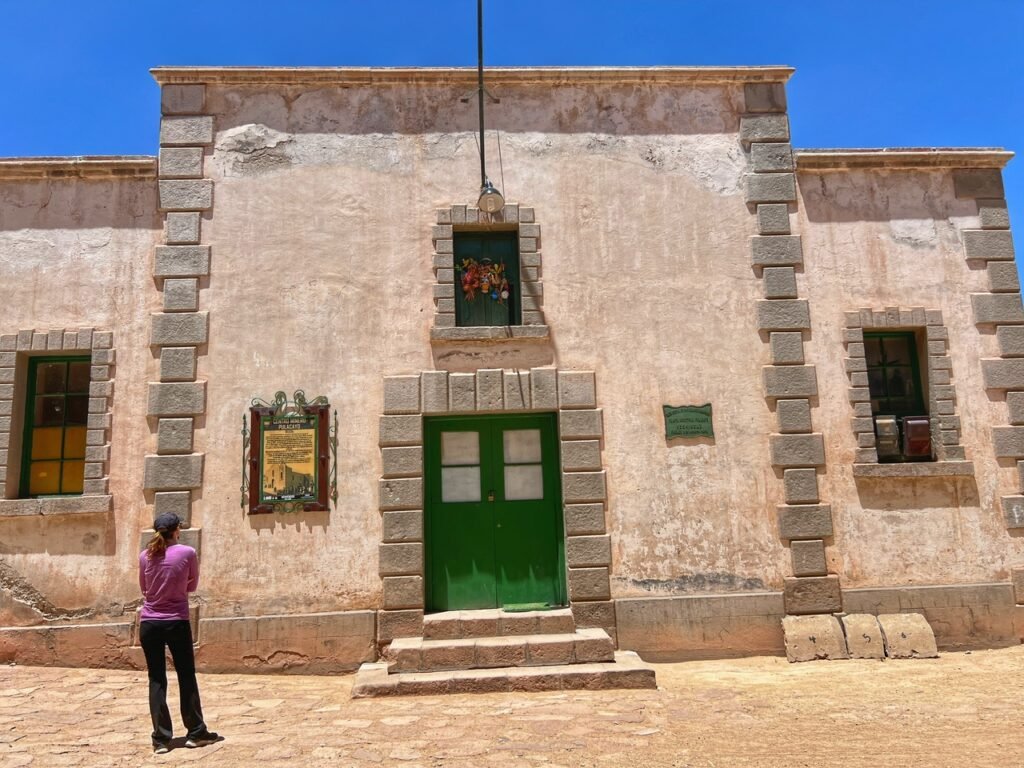
The historic church belongs to the same period, 1878, which like many buildings at the time burned down. There are two versions about the cause of the fire. One of them says that the fire was caused by the administrator who was not Catholic and got pissed because of the celebrations and ringing of bells.
Another version is that a candle in the basement caused the fire. In any case, it burned down, later becoming a technical office where the first IBM card computers that arrived in Bolivia worked. Currently it is a social headquarters, the interesting thing is that in the old basement two bowling lanes were installed, which was a sport practiced exclusively by foreign technicians.

Moving into a former residential neighborhood of the village, called Barrio 25 de Mayo, which was lived in from 1909 to 1992.
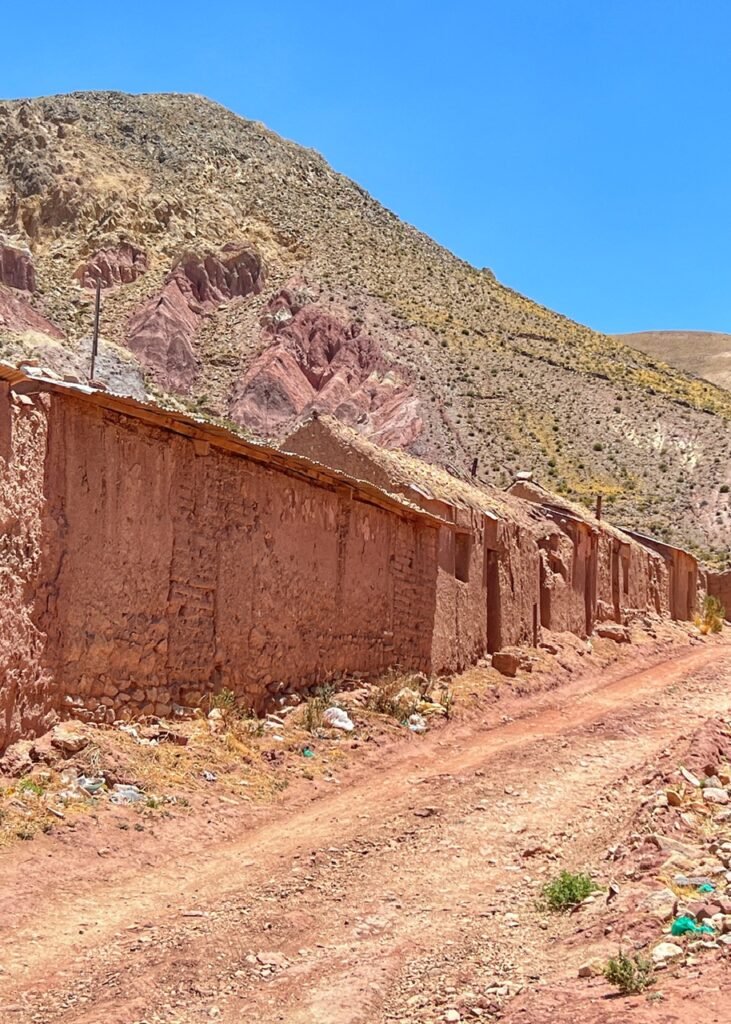

But it seems like it was a LOT longer ago than that. The electric lines tell the modern day story, however.
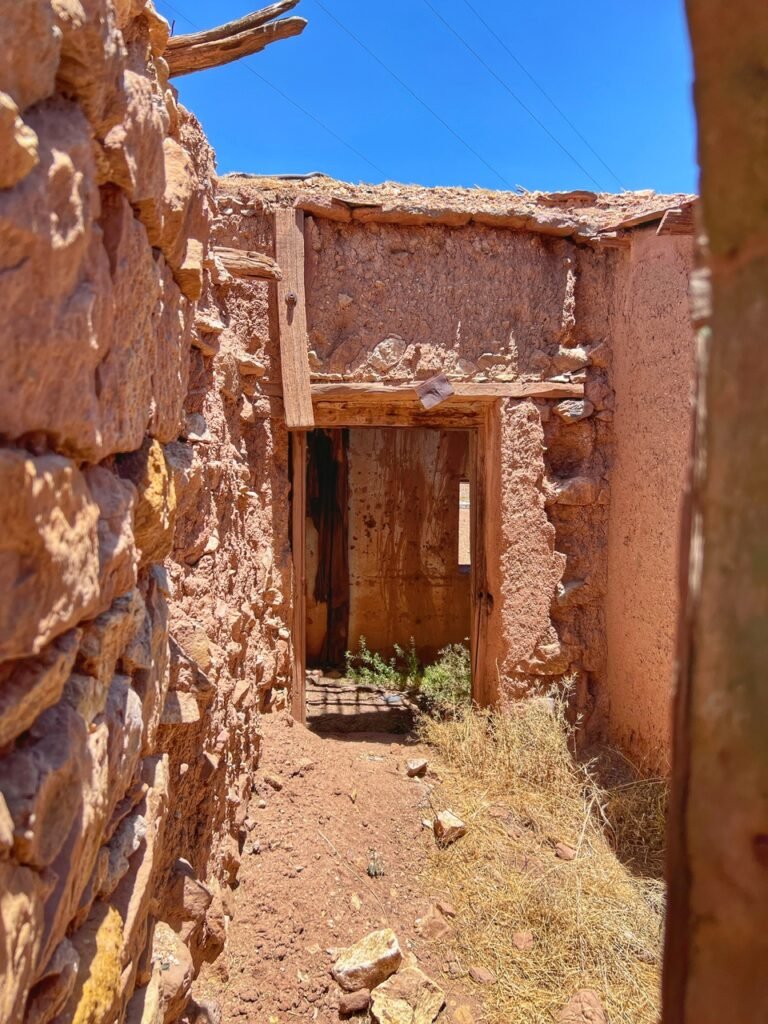

Like everywhere in the village, we were free to roam where we wanted, including into homes with a carpet of…bones?! 😬
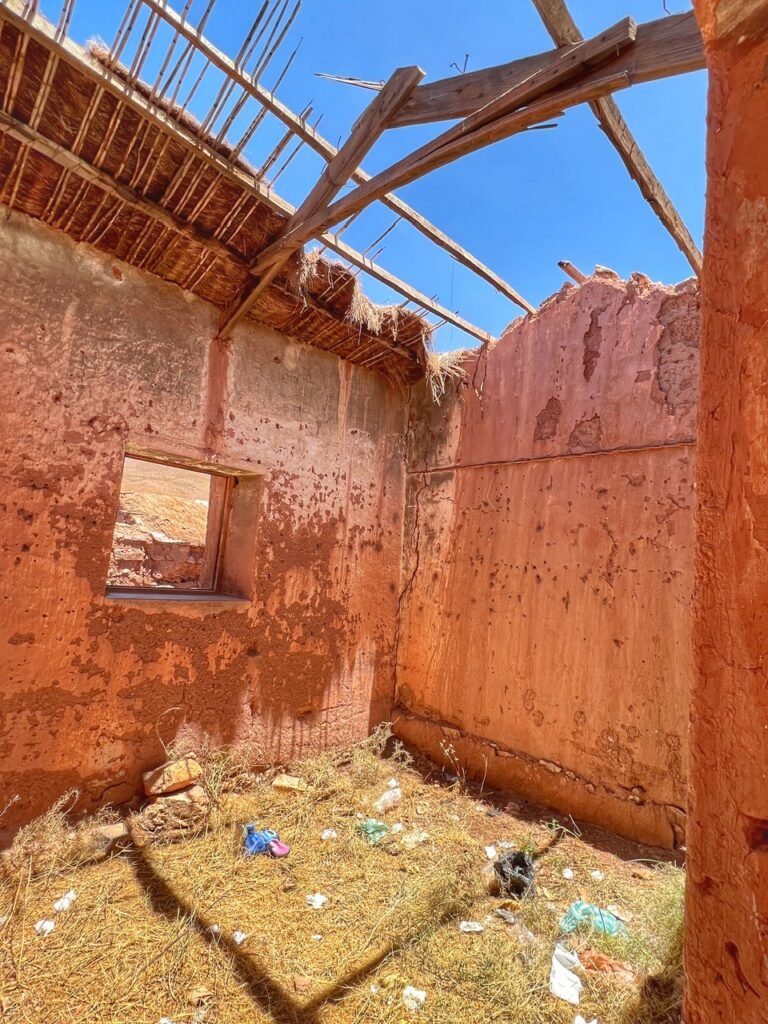
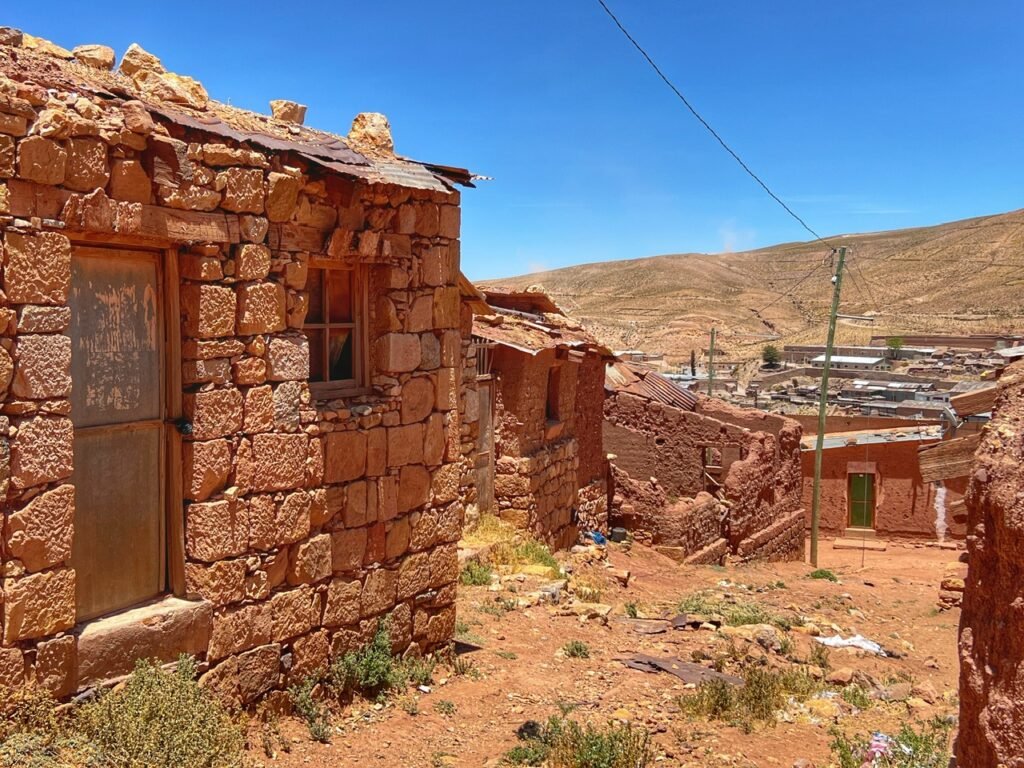
The desolate nature of this place was remarkable, and felt incredibly peaceful.

Even a well loved basketball goal remained.
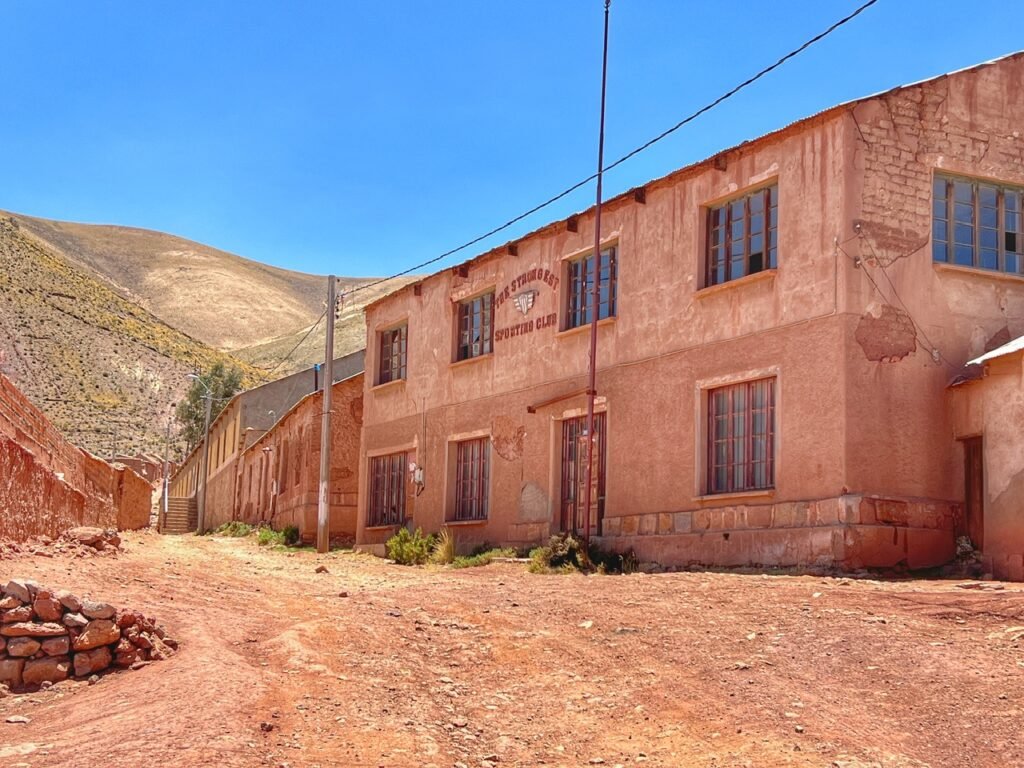
A building that may still be in use called “The Strongest Sporting Club,” which was strangely written in English.
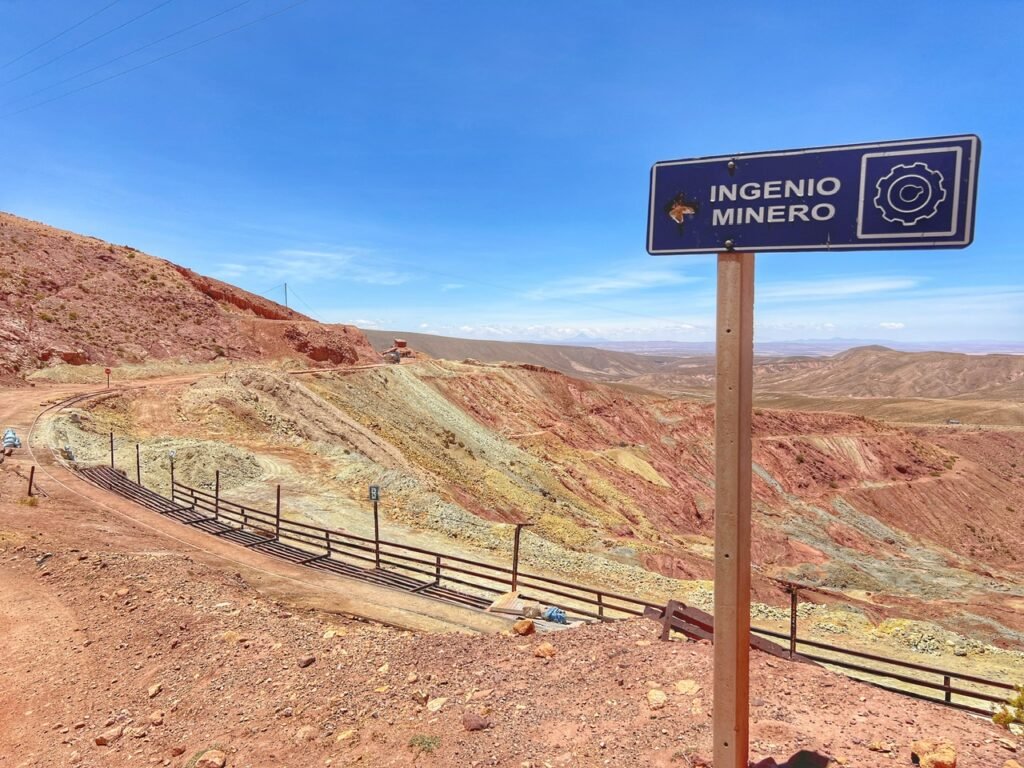
Toward the mines of which, only a small portion are still in operation.

A massive tool sharpening flint stone courtesy of New Jersey.
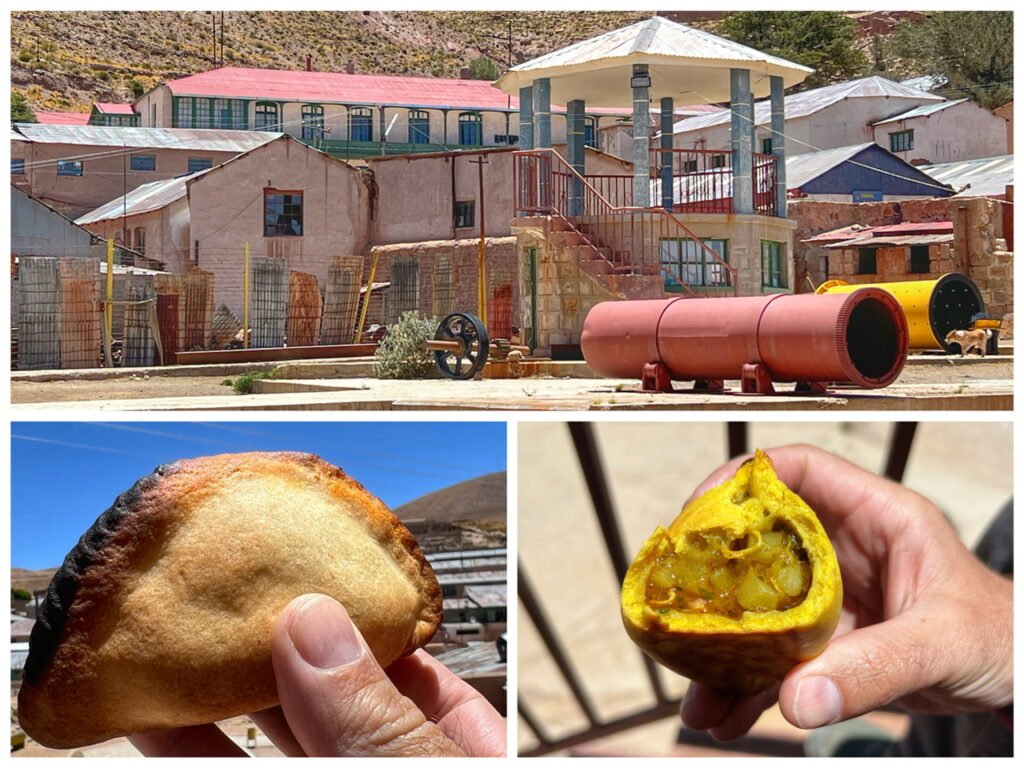
Of course, since there’s nothing operating today, it helps to bring along a picnic lunch. We enjoyed our first Saltenas, bought in Uyuni, stuffed with curry chicken and veggies, underneath the town gazebo. They were delicious, messy, and tasted a lot like Indian samosas. Yum.

The town pedestrian bridge is a little bit precarious.
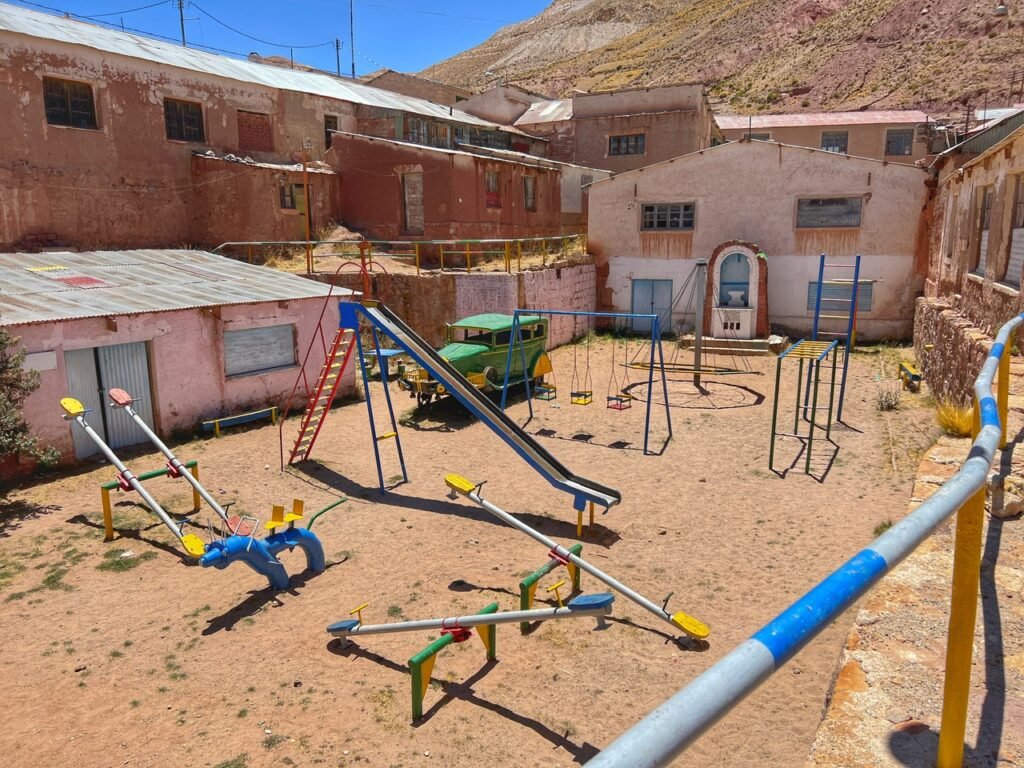
But the playground was in better shape. In fact, we even saw two kids playing on the equipment.
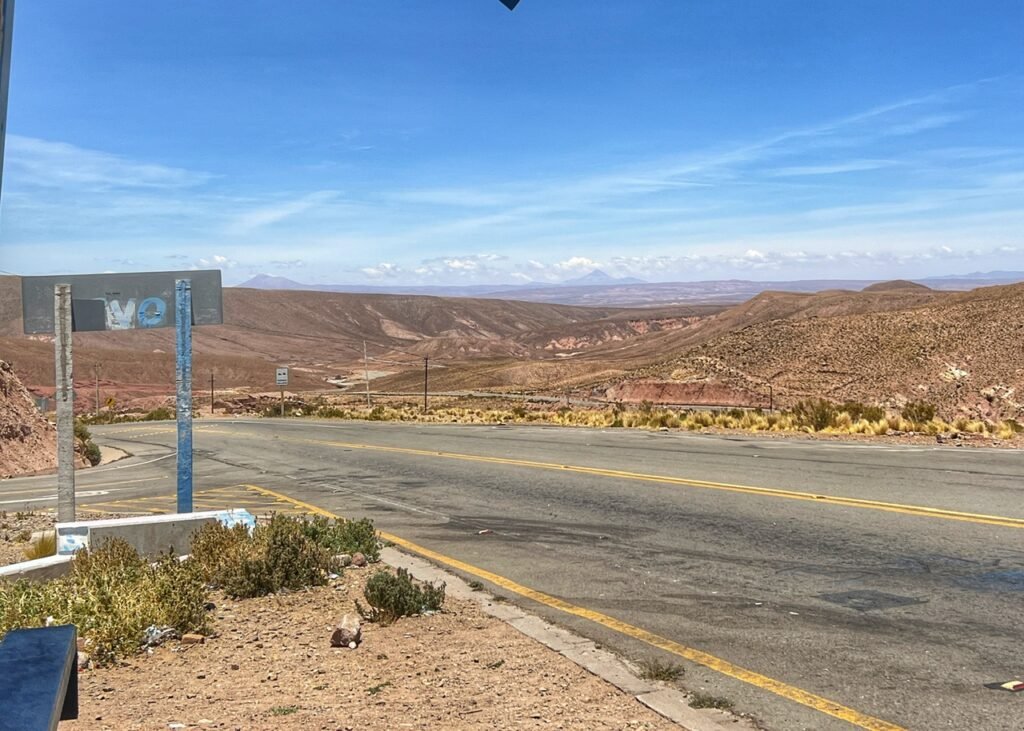
Heading back down to the road, we waited about 25 minutes before a bus passed on its way back to Uyuni. This adventure was very well worth it!

